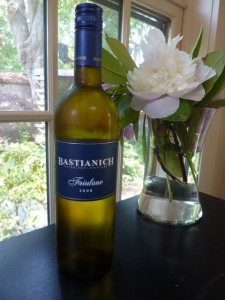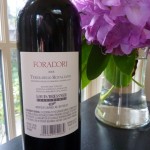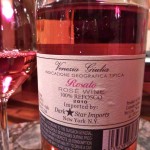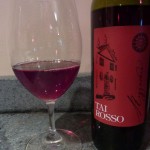
This fall, Italiaoutdoors is leading two bike trips that explore the wine roads of the Veneto and Trentino regions of Northeastern Italy. Each day, on these or on any of our custom tours, as we wind our way through the beautiful countryside, we will discover the unique wines that have been cultivated here for generations. In Italy, these wine territories are designated as DOC (Denominazione di Origine Controllata) zones. The types of grapes and production methods in each zone are strictly controlled by the government, and this designation is an indication of the quality of the wine.
As we travel on our active tours, be it biking, hiking, walking or skiing, my favorite wines to introduce to our guests are those they have never experienced before. Across the Veneto, Trentino-Alto Adige, and Friuli-Venezia Giulia, there is a new wine region with its own traditional wines, remarkable terroir and distinctive winemaking style around every corner, and an amazing number of them are relatively, if not completely, undiscovered in the US.
Here are my favorites – my top 10 undiscovered wines from Northeastern Italy. We’ll savor a Tai Rosso and Raboso on our upcoming Bike the Wine Roads of the Veneto trips this fall. Ski trips this winter will give us lots of opportunities to taste Teroldego and Lagrein wines, and visits next season to Friuli will include a few tastes of Friulano and Picolit.

1. Friulano (the wine formerly know as Tocai Friulano or Tocai Italico).
Tocai Friulano is the pride and joy of the Collio wine region of Friuli-Venezia Giulia. So Friulians were not particularly happy when the EU dictated that the only wine that could use the Tocai name was the Hungarian dessert wine, Tokay. After much debate, a new name was decided upon – Friulano – and after 2006 winemakers in the region were no longer allowed to use the Tocai name. However, you will still hear the wine referred to as Tocai throughout the region (and Italy). Friulano is clean, delicate, refreshing white wine with a palate that varies according to the terroir. It appears as both a varietal and in blends.
2. Ribolla Gialla
This grape, believed to have originated in the Colli Orientali di Friuli, produces a wonderful white that is almost unknown outside the region. The phylloxera epidemic of the 19th century destroyed many of the Ribolla plantings, which were replanted with imported grapes like Merlot and Sauvignon Blanc. By the 1990s less than 1% of all white Friuli DOC wines contained Ribolla. Most recently, renewed international interest in the wines of the Friuli has thankfully led to an increase in plantings of the grape. It is lively and flavorful, and pairs well with many dishes, from seafoods to fruit.
3. Vino Santo
The Trentino region is renowned for its Vino Santo, a sweet wine made from dried grapes. This is not to be confused with the Vin Santo produced in Tuscany – this is a uniquely traditional product of the region, incorporating the native Nosiola varietal, and a treat not to be missed on a visit to the region. Nosiola is the oldest white grape variety grown in Trentino, believed to have originated in the Pressano hills and Sarca valley.

4. Picolit
Also known as Piccolit and Piccolito, Picolit is a white Italian wine grape grown in the Colli Orientali del Friuli DOC zone of Friuli-Venezia Giulia. The name comes from piccolo, or small, due to the fact that this grape has very low yields. which continue to challenge the growers to make it an economically viable product. The Picolit grapes are characterized by a nice balance of sugar and acidity, resulting in a well-balanced dessert wine with soft floral aromas and stone fruit flavors.
5. Teroldego
Teroldego is considered the king of Trentino wines. Legend has it that the name itself derives from Tiroler Gold, the gold from Tyrol. It flourishes only in the Piana Rotaliana area, and, in spite of many efforts to reproduce the vineyards, environment, and irrigation in other regions, no one has successfully replicated these high quality wines anywhere else. Teroldego wines are quite distinctive, with intense fruit, full body, and a strong, dry taste.
6. Marzemino
Originally produced in the Rovereto region of Trentino, Marzemino was introduced by the Venetians in the 16th century. In Mozarts’ opera, Don Giovanni, Giovanni himself makes his last request before his deliverance to hell – a glass of Marzemino. This is a delicate, mellow wine with intense fruit and floral elements. It is a lighter bodied wine, and is not aged for too long – two to three years is optimum.
7. Raboso
Raboso is an ancient wine, grown in the Piave River valley of the Veneto region before the time of the Roman Empire. At one point, this grape was perhaps the most important variety of eastern Veneto, but, as with many indigenous grapes, saw native planting replace by international varietals in the 20th century. At full maturity, Raboso is one of the great Italian reds, dry and full-flavored with an intense ruby red color and its typical bouquet of spicy cherries.

8. Refosco dal Peduncolo Rosso
Refosco is a family of dark-skinned varietals native to the northern Italian areas of Friuli-Venezia Giulia and Trentino. The grape is also known as Terlan or Terlano. The origins of this varietal are not clear, but DNA analysis has shown that it is related to Marzemino. Refosco produces deeply colored wines that aged well, with very intense and concentrated flavors, and a slightly bitter finish. A rose are also available.
9. Lagrein
Lagrein is a red grape native to the Lagarina valley in Trentino-Alto Adige. Along with Marzemino and Refosco, it is a descendant of Teroldego, and related to Syrah, Pinot Noir and Dureza. It is rarely seen outside of the region. Lagrein grapes produce wines that exhibit a high acidity, and even the free run juice is tannic. Lagrein produces a very deep yet intense red color in wine, with flavors of dark berry and cherry, and notes of tobacco and mushrooms. A rose version is also produced.

10. Tocai or Tai Rosso:
Tai Rosso, an indigenous varietal cultivated in the Colli Berici of the Veneto region, where it arrived from Hungary. In spite of its alleged origins, is not related to the Hungarian Tokay; most experts believe that it is more likely related to the Sardinian Cannonau or Granache. Before 2007, it was called Tocai Rosso, but since the regulations restricted the use of the Tocai name, it has been changed to Tai Rosso. This is a lighter red wine, clear and brilliant, with a bright red color, and a balanced, harmonious taste with a hint of cherries.

Pingback: Italian Wine Bottles | Italian Red Wine | Brunello di Montalcino» Wines from Italiaoutdoors bike, hike and ski tours in Italy …
Pingback: Foradori Teroldego - Top 10 Undiscovered Wines of NE Italy | Italian Food, Wine, Health and Fitness
Pingback: Undiscovered wines from Italiaoutdoors Bike, Hike, Ski tours | Italian Food, Wine, Health and Fitness
Pingback: Food, WIne from Italiaoutdoors bike hike walk tours in Italy | Italian Food, Wine, Health and Fitness
Pingback: A Rare Italiaoutdoors Find: St. Magdalener Schiava Lagrein | Italian Food, Wine, Health and Fitness
Pingback: A Guide to Touring Wineries in Italy - 10 Tips for Travelers | Travel & Vacation Tips & Articles
Pingback: Corte Benedettine: Explore unknown wines with Italiaoutdoors | Italian Food, Wine, Health and Fitness
Pingback: Muri-Gries Lagrein: Italiaoutdoors Bike the Wine Roads Tour | Italian Food, Wine, Health and Fitness
Pingback: Schioppettino: Wines from Italiaoutdoors Bike Ski Hike Tours | Italian Food, Wine, Health and Fitness